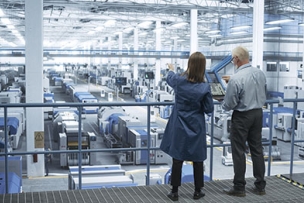MCR Safety has over forty years of experience as a leader in the field of personal protective equipment (PPE). Our assortment of offerings includes gloves, glasses, and garments which are made from the highest quality materials available to ensure maximum safety, comfort, and style.
The Occupational Safety and Health Administration (OSHA) ensures safe and healthful conditions for workers by setting and enforcing standards and providing training, outreach, education, and assistance. Across the country, over 2,000 inspectors visit worksites daily to ensure the 130 million-plus American workers are safeguarded from hazardous workplaces.
OSHA also turns to those employees they safeguard and hopes to see many trained in proper safe work practices through their Outreach Training Program. They don't place any mandates on getting an OSHA card; however, they see it as an essential step in helping workers understand the hazards they will most likely encounter. In many states and cities, job creators make initial safety training required, so it only helps find employment, especially if you plan to work in the construction industry, the maritime industry, or at disaster worksites. From 2016 to 2020, there have been 5.21 workers trained, which means many workers are being enlightened on workplace safety.
Here MCR Safety is going to tell you all about OSHA's 10-hour training. This training is for entry-level workers and provides basic safety and health information. There is a 30-hour training program, which offers workers a more in-depth look at safety responsibilities. They will cover that more in-depth in a future article. For now, let's ensure you understand everything that rolls up under the OSHA 10-hour training.
What is OSHA 10?
OSHA 10-hour training is a voluntary training program offered by the United States Labor Department. It is meant for entry-level workers who aren't in supervisory or director roles. Training is tailored to the needs of specific industries, and the content is geared toward hazard recognition and avoidance.
During the training, which occurs over two days and approximately 15 total hours, you'll learn the primary safety hazards and job-related safety issues. It also covers workers' rights, what the employer is responsible for, and how to file an OSHA complaint.
General Industry, Construction, and Maritime
As highlighted in the opening, almost anyone can benefit from increased safety knowledge. For entry-level workers, learning about potential dangers on the job they may not have known about is valuable before arriving to work on their first day. There is also an advantage for the employer since studies have shown that OSHA 10-hour training can help reduce workplace accidents and avoid costly legal battles.
- The general industry training is considered the universal safety training that applies to manufacturing, warehousing, distribution and storage, healthcare, and other medium/high-risk industries.
- The construction training session is for entry-level construction workers who are using tools, assembling frameworks, and handling various materials. According to the Bureau of Labor Statistics (BLS), 827,100 construction laborers fit this description. MCR Safety covers construction in-depth on their Construction Industry page, and highlights occupations and tasks performed across 10 specific sub-industries.
- The maritime industry is designed for those working on a shipyard, including subcontractors, that repair and build ships.
Depending on your current employer or future employer, you will need to verify if you need general industry training or more tailored training for a specific industry. It's always a good idea to check first before completing either training. While the training is voluntary, many state governments and local jurisdictions require it to work for a construction company. It's essential to ask your employer which training is required before starting, as some states have different requirements for specific industries.
Training
OSHA 10-hour training is about keeping everyone safe on the job. Training helps mitigate those risks by educating employees on identifying, avoiding, and correcting potential hazards on the job. Here are some of the core subjects covered in the OSHA 10-hour training, regardless of the specific industry:
- Personal Protective Equipment (PPE)
- Intro to OSHA
- OSHA standards
- Safety and health programs
You'll be guaranteed to learn about the above three. Then, each unique industry training starts to zero in on the industry hazards. Workers begin to receive additional training on hazards specific to their job. Construction spends time highlighting excavating and trenching, whereas the maritime industry covers machine guarding and lockout/tagout at marine terminals. Here are some agendas created by trainers for each training and tailored subjects found in each:
- Construction – working at night, preventing runovers
- General Industry – bloodborne pathogens, recordkeeping, fire prevention
- Maritime – lockout/tagout and hazardous materials at marine terminals
OSHA also has produced a full 270-page document on all training requirements found in OSHA standards. It will aid anyone hoping to understand better the topics touched on in OSHA training classes.
Construction Safety Course
There are over 7 million workers who find employment in construction, which means there are a lot of workers needing to be trained. If your business employs construction workers, requiring the OSHA 10-hour training program can go a long way to protect your business and employees. Training can go a long way in helping prevent the "fatal four" accidents: Falls, Struck by Objects, Electrocutions, and Caught In or Between accidents.
You'll still go over the general safety topics for the construction training. However, it will also involve more construction-related safety concerns. Here is a closer look at what you can expect to learn about:
- Fall Protection
- Electrical Safety
- Crane Safety
- Silica Safety
- Hand and Power Tool Safety
Many of these topics have been highlighted in other MCR Safety articles, such as Essential Construction Tools and Hand Tool Safety and Shining a Light on Ladder Safety.
Continue to read this blog here.
Previously Featured on MCR Safety's blog.









Talk to Us!
Leave a reply
Your email address will not be published. Required fields are marked *